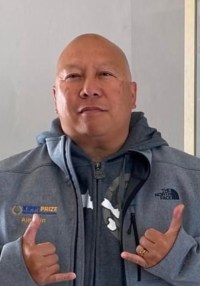<!-- wp:paragraph -->
<p>As we continue to watch reforms and the continued professionalization of college sports I believe that young athletes should have a more strategic approach on when they start their NCAA clock. Most athletes hit their physical prime between the ages of 23-30. If you are a collegiate coach employing players to win games who only have a maximum of 4 years to play with your program, would you rather recruit a 22 year old about to enter their prime or an 18 year old out of high school who will be done playing for you right as they are entering their physical prime? I think it is obvious the former would be the logical choice. </p>
<!-- /wp:paragraph -->
<!-- wp:paragraph -->
<p>If you look at the roster make-up of the two teams competing for the Men's Soccer National Championship, The University of Vermont and Marshall University rosters both show a strong theme. There are a ton of international students who are between the ages 20-22 entering their Freshmen season. </p>
<!-- /wp:paragraph -->
<!-- wp:paragraph -->
<p>Most of these players tried to make the professional ranks in Europe and are now looking at a free or discounted continued education while continuing their playing career. It is much more socially acceptable for an international player to do this than an American player right out of high school. Societal pressures and norms push athletes into programs right out of high school meaning they will be done playing at 22 or 23. I think in today's landscape this is ill-advised. With not only scholarships at stake but NIL, and revenue sharing money at stake. Athletes should try and enter this vital 4-year period in the most advantageous conditions possible. </p>
<!-- /wp:paragraph -->
<!-- wp:paragraph -->
<p>Alternative paths to starting your NCAA clock later, will be more and more popular among American athletes. Prep school years after high school, gap years to develop an athletes game in alternative competitions and under enrolling at schools to get some classes done while not starting their NCAA clock will become more and more mainstream. In the soccer world leagues such as the UPSL, USL2, NPSL, USLW, WPSL are good alternative paths to delaying an athletes clock. However, under enrolling in classes can leave a young person behind academically and is not ideal for many.</p>
<!-- /wp:paragraph -->
<!-- wp:paragraph -->
<p>I believe that one solution to this problem is hiding in plain sight. Junior Colleges (JUCO's) around the country have a massive opportunity to differentiate themselves from the NCAA by making it so the athletes competing for their team's do not start their NCAA clock prematurely. Most JUCO schools and conferences are not affiliated with the NCAA and run differently. An athlete's eligibility to play at a JUCO is 2 years not 4. I believe it is in everyones best interest to change this. If we made eligibility to play at a JUCO institution 3 or 4 years with an athletes ability to take a normal load of classes it would give athletes the ability to develop into that vital NCAA 4-year window closer to their athletic primes.</p>
<!-- /wp:paragraph -->
<!-- wp:paragraph -->
<p>This makes JUCO athletes more desirable for NCAA Division I-III coaches as they are older and more developed players. Similar to what a 20-22 year old from Europe is. It will bring more attention to the JUCO game while also allowing athletes to not get too far behind academically. Everyone wins! </p>
<!-- /wp:paragraph -->
<!-- wp:paragraph -->
<p></p>
<!-- /wp:paragraph -->
As we continue to watch reforms and the continued professionalization of college sports I believe that young athletes should have a more strategic approach on when they start their NCAA clock. Most athletes hit their physical prime between the ages of 23-30. If you are a collegiate coach employing players to win games who only have a maximum of 4 years to play with your program, would you rather recruit a 22 year old about to enter their prime or an 18 year old out of high school who will be done playing for you right as they are entering their physical prime? I think it is obvious the former would be the logical choice.

Continue reading this article and more.
Continue Reading
Already a subscriber?
Log in







